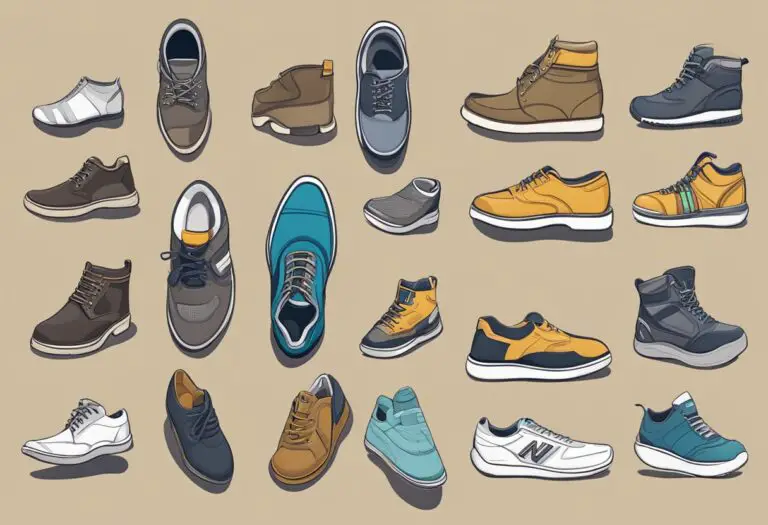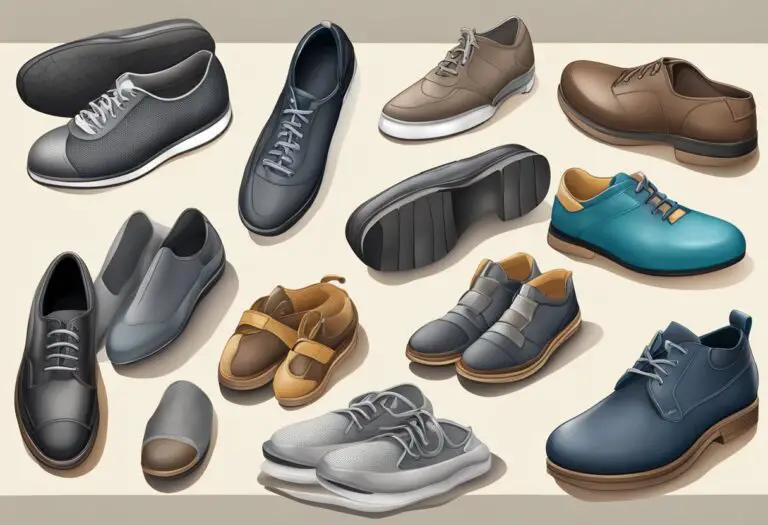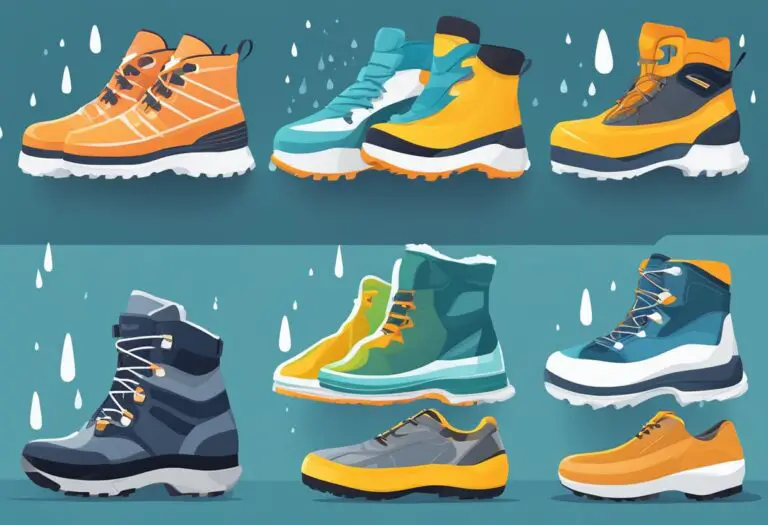How do I choose the right shoe size to ensure a comfortable fit?
How to Choose the Right Shoe Size for Optimal Comfort
Choosing the right shoe size is crucial for ensuring optimal comfort. Wearing shoes that are too small can cause blisters, calluses, and even permanent damage to the feet. On the other hand, shoes that are too big can cause the foot to slide around, leading to discomfort and potential injury. With so many different shoe sizes and styles available, it can be difficult to know where to start when it comes to finding the perfect fit.
One of the first steps in choosing the right shoe size is to measure your feet. It’s important to measure both feet, as they may be slightly different sizes. To get an accurate measurement, stand on a piece of paper and trace the outline of your foot. Then, measure the length and width of each foot and compare the measurements to a shoe size chart. Keep in mind that shoe sizes can vary between brands, so it’s important to try on shoes before making a purchase.
Another important factor to consider when choosing the right shoe size is the type of shoe you need. Different types of shoes may fit differently, so it’s important to choose the appropriate size for the specific style you’re interested in. For example, running shoes may need to be a half size larger than your normal shoe size to allow for extra room when your feet swell during exercise. Dress shoes, on the other hand, may need to be a bit snugger to prevent slipping and ensure a more polished look. By taking the time to measure your feet and consider the type of shoe you need, you can find the perfect fit for optimal comfort.
Understanding Shoe Sizing Systems

When it comes to choosing the right shoe size, understanding the different sizing systems can be helpful. There are various shoe sizing systems used across the world, but the most common ones are US, UK, and EU sizing charts.
US, UK, and EU Size Charts
The US shoe sizing system is based on the length of the foot in inches, while the UK system is based on the length of the foot in barleycorns (one-third of an inch). The EU system, on the other hand, is based on the length of the foot in centimeters.
It’s important to note that the sizes can differ slightly between brands and styles, so it’s always a good idea to try on shoes before making a purchase. Additionally, some brands may use a different sizing system altogether, so it’s important to check the size chart before making a purchase.
Measuring Your Foot at Home
If you’re unable to try on shoes in person, measuring your foot at home can be a helpful way to ensure you’re choosing the right size. To measure your foot, follow these steps:
- Place a piece of paper on a hard floor and stand on it with your heel against the wall.
- Mark the longest part of your foot on the paper with a pen or pencil.
- Measure the distance between the wall and the mark you made on the paper.
- Use the measurement to find your size on a sizing chart.
It’s important to measure both feet, as they may be slightly different sizes. Additionally, it’s best to measure your feet at the end of the day when they’re at their largest.
Factors Affecting Shoe Fit

When choosing the right shoe size for optimal comfort, several factors come into play. These factors can make a significant difference in how well a shoe fits and how comfortable it feels.
Foot Width and Shoe Width
Foot width is a crucial factor in determining the right shoe size. It is essential to measure the width of the foot accurately and choose a shoe that matches the width of the foot. Shoes that are too narrow can cause discomfort and even pain, while shoes that are too wide can lead to slipping and sliding.
Shoe width is usually denoted by letters such as A, B, C, D, E, etc. A shoe with a width of A is the narrowest, while a shoe with a width of E is the widest. It is essential to choose a shoe with the right width to ensure optimal comfort.
Arch Type and Shoe Shape
The arch type of the foot plays a significant role in determining the right shoe size. People with high arches require shoes with more arch support, while people with flat feet need shoes with more cushioning.
Shoe shape is also crucial in determining the right shoe size. People with wide feet should look for shoes with a wider toe box, while people with narrow feet should look for shoes with a narrower toe box.
Foot Length and Toe Room
Foot length is the most common factor people consider when choosing the right shoe size. It is essential to measure the foot’s length accurately and choose a shoe that matches the length of the foot. Shoes that are too short can cause the toes to cramp, while shoes that are too long can lead to slipping and sliding.
Toe room is also crucial in determining the right shoe size. It is essential to choose a shoe with enough toe room to allow for natural movement and prevent cramping.
In conclusion, choosing the right shoe size is crucial for optimal comfort. Foot width, arch type, shoe shape, foot length, and toe room are all factors that come into play when determining the right shoe size. It is essential to measure the foot accurately and choose a shoe that matches the foot’s size and shape to ensure optimal comfort.
Trying on Shoes for Best Fit

When it comes to choosing the right shoe size, trying on multiple sizes is essential to ensure optimal comfort. Here are some tips to help you find the perfect fit:
The Importance of Trying on Multiple Sizes
It’s important to try on multiple sizes because different brands and styles can vary in size. Additionally, your feet may be slightly different sizes, so trying on both shoes is crucial. It’s recommended to try on shoes at the end of the day when your feet are at their largest.
Checking for Proper Heel Fit
The heel of the shoe should fit snugly against the back of your foot without slipping. If the shoe slips, it’s too big. If it’s too tight, it can cause blisters and discomfort. Make sure to walk around in the shoes to ensure the fit is secure.
Walking Test and Comfort Assessment
Take a few steps in the shoes to assess the fit and comfort level. Your toes should have enough room to wiggle, and the shoe should not feel too tight or loose. Pay attention to any areas of discomfort or pressure points. It’s also important to consider the type of activity you’ll be doing in the shoes and ensure they provide the necessary support.
By following these tips and trying on multiple sizes, you can find the perfect shoe size for optimal comfort.
Impact of Activities on Shoe Size

Athletic Shoes vs Casual Shoes
Different activities require different types of shoes, and this can impact the shoe size that is needed for optimal comfort. Athletic shoes, such as those worn for running or basketball, tend to have a more snug fit to provide better support and stability during movement. This means that individuals may need to size up when purchasing athletic shoes to ensure that they are not too tight.
On the other hand, casual shoes such as loafers or sandals tend to have a looser fit for comfort. Individuals may need to size down when purchasing casual shoes to ensure that they do not slip off or feel too loose.
Special Considerations for Running Shoes
When it comes to running shoes, there are a few special considerations to keep in mind when selecting the right size for optimal comfort. First, it is important to consider the type of running that will be done. Trail running may require a larger shoe size to accommodate thicker socks or to provide extra room for foot swelling.
Additionally, it is important to consider the shape of the foot. Some individuals may have wider or narrower feet, which can impact the size and fit of the shoe. It is recommended to try on running shoes at the end of the day when feet are at their largest and to consult with a specialist for further guidance on selecting the right size and fit.







